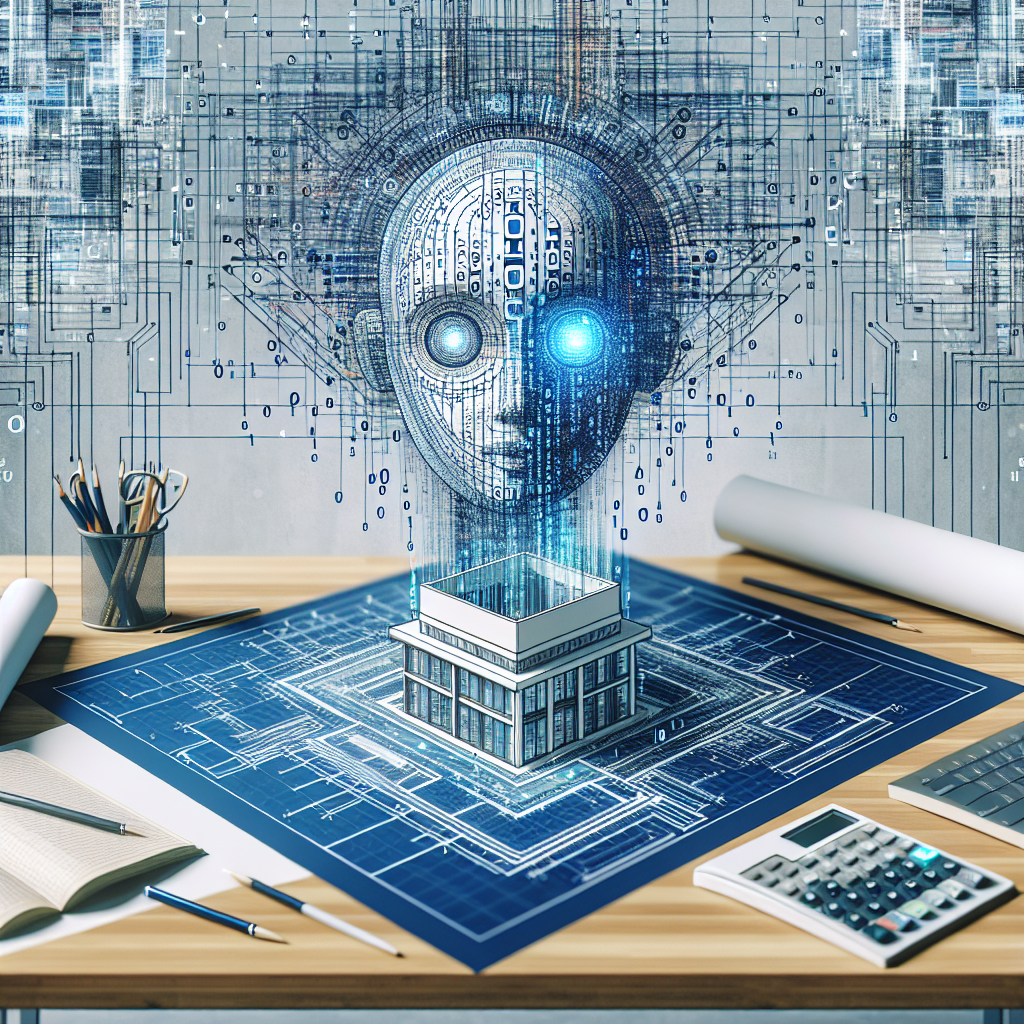AI in Architecture: Redefining the Role of the Architect
Artificial Intelligence (AI) has been making waves in various industries, and the field of architecture is no exception. The integration of AI in architecture has redefined the role of the architect, allowing for greater efficiency, creativity, and sustainability in the design process. From generative design to construction monitoring, AI is revolutionizing the way architects work and pushing the boundaries of what is possible in the built environment.
Generative Design
One of the most exciting applications of AI in architecture is generative design. Generative design uses algorithms to explore thousands of design iterations based on specified parameters such as site conditions, building program, and environmental factors. This process allows architects to quickly generate a wide range of design options, enabling them to explore new possibilities and discover innovative solutions that may have been overlooked through traditional design methods.
Generative design also allows architects to optimize designs for performance metrics such as energy efficiency, daylighting, and structural integrity. By simulating and analyzing different design options, architects can make more informed decisions early in the design process, leading to buildings that are not only aesthetically pleasing but also sustainable and efficient.
Construction Monitoring
AI is also being used to monitor construction progress and quality control on building sites. By analyzing data from sensors and cameras installed on-site, AI can detect potential issues such as deviations from the construction schedule, safety hazards, and quality defects. This real-time monitoring allows architects and contractors to address problems promptly, ensuring that the project stays on track and meets the required quality standards.
AI-powered construction monitoring can also improve worker safety by identifying potential risks and hazards on-site. By alerting workers and supervisors to dangerous conditions, AI can help prevent accidents and injuries, making construction sites safer for everyone involved.
Client Interaction
AI is also transforming the way architects interact with clients. Virtual reality (VR) and augmented reality (AR) technologies powered by AI allow clients to experience and visualize architectural designs in a more immersive and interactive way. Clients can walk through virtual models of their future buildings, explore different design options, and provide feedback in real time.
AI can also help architects and clients communicate more effectively by automatically generating design proposals based on client input and preferences. By leveraging AI to understand client needs and preferences, architects can tailor their designs to better meet the expectations of their clients, leading to more successful and satisfying projects.
Sustainability
AI is playing a crucial role in advancing sustainability in architecture. By analyzing data on energy consumption, carbon emissions, and environmental impact, AI can help architects design buildings that are more energy-efficient, environmentally friendly, and sustainable. AI-powered simulations can optimize building performance by adjusting parameters such as building orientation, materials, and systems to minimize energy use and reduce carbon footprint.
AI can also assist architects in selecting sustainable materials and construction methods by providing data on the environmental impact of different options. By making informed decisions based on AI-generated insights, architects can create buildings that are not only beautiful and functional but also environmentally responsible.
Challenges and Opportunities
While AI offers many benefits to the field of architecture, it also presents challenges that architects must consider. One of the main challenges is the potential loss of creativity and human touch in the design process. As AI becomes more sophisticated and capable of generating design solutions, there is a concern that architects may become overly reliant on AI algorithms, leading to a homogenization of architectural styles and a lack of originality in design.
Another challenge is the ethical implications of AI in architecture. As AI algorithms make decisions that impact people’s lives and environments, architects must consider issues such as privacy, bias, and accountability in the use of AI technologies. Architects must ensure that AI is used ethically and responsibly, taking into account the social, cultural, and environmental implications of their design decisions.
Despite these challenges, AI also presents exciting opportunities for architects to expand their creative boundaries and explore new possibilities in design. By embracing AI technologies and integrating them into their workflow, architects can streamline the design process, improve project outcomes, and create more sustainable and innovative buildings.
FAQs
Q: How is AI changing the role of the architect?
A: AI is redefining the role of the architect by enabling greater efficiency, creativity, and sustainability in the design process. AI technologies such as generative design, construction monitoring, and client interaction are transforming the way architects work and pushing the boundaries of what is possible in architecture.
Q: What are the benefits of using AI in architecture?
A: The benefits of using AI in architecture include faster design iterations, optimized building performance, improved construction monitoring, enhanced client interaction, and increased sustainability. AI technologies help architects make more informed decisions, streamline the design process, and create buildings that are beautiful, functional, and environmentally responsible.
Q: What are the challenges of using AI in architecture?
A: Some of the challenges of using AI in architecture include the potential loss of creativity and human touch in the design process, ethical implications of AI technologies, and concerns about privacy, bias, and accountability. Architects must navigate these challenges to ensure that AI is used ethically and responsibly in their design practice.
Q: How can architects incorporate AI into their workflow?
A: Architects can incorporate AI into their workflow by exploring AI technologies such as generative design, construction monitoring, client interaction, and sustainability analysis. By leveraging AI tools and algorithms, architects can enhance their design process, improve project outcomes, and create buildings that are innovative, efficient, and sustainable.

